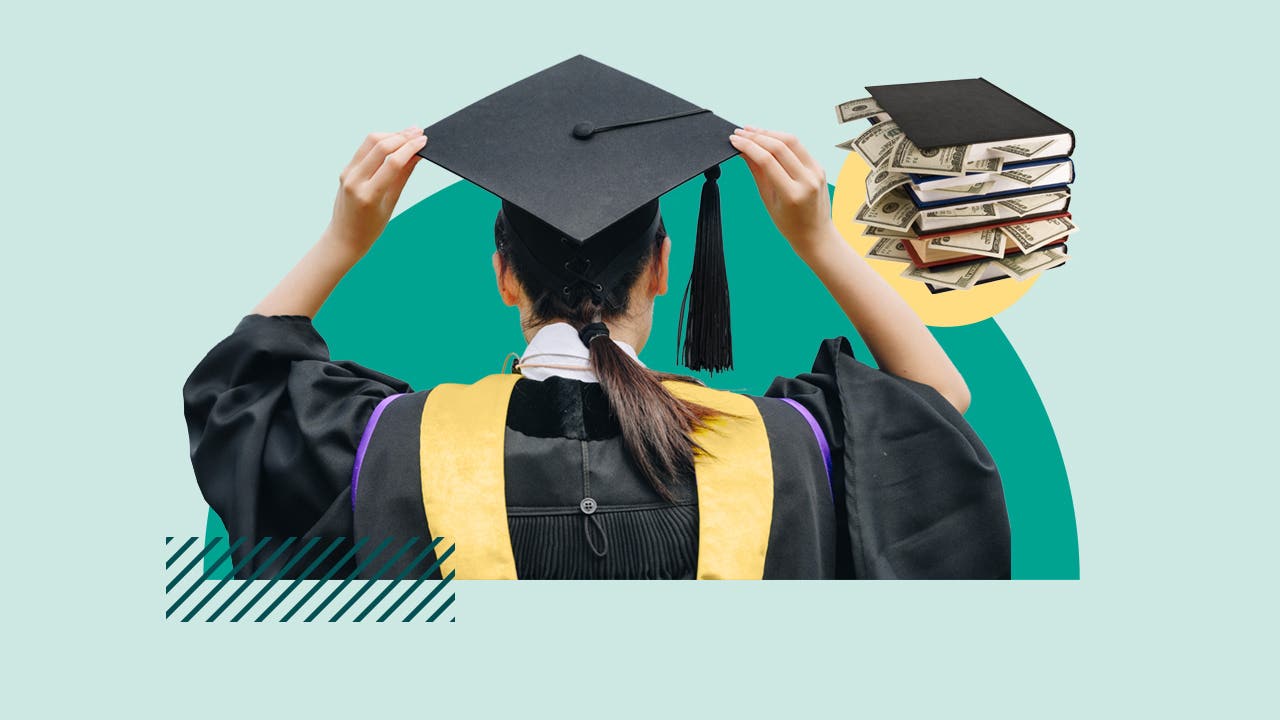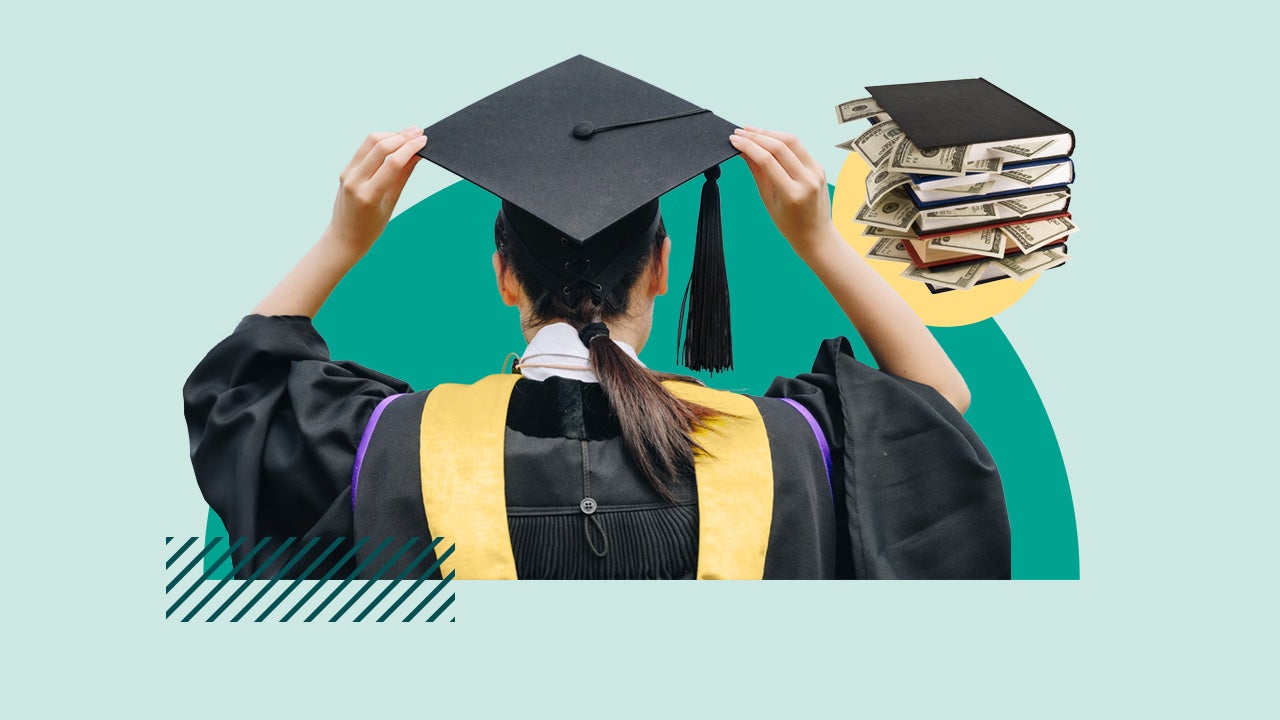Millennials Average Student Loan Debt: Crushing Figures Unveiled

Millennials carry an average student loan debt of approximately $38,000. This debt impacts their financial decisions significantly.
Saddled with substantial student loan debt, many millennials confront a myriad of financial challenges post-graduation. The cost of education has been rising steadily, and millennials find themselves at the intersection of rising tuition costs and an increasingly competitive job market.
This often results in delayed milestones such as home ownership, marriage, and wealth-building investments. Understanding the average student loan debt is crucial for financial planning and policy-making, aiming to alleviate the burden on this generation. As they navigate repayment options and financial strategies, millennials seek solutions to manage and eventually overcome the daunting figures of their educational debt.

Credit: www.bankrate.com
The Millennial Burden
Millennials face a unique challenge unlike any before them. This generation bears the weight of significant student loan debt, a burden that has far-reaching implications for their financial stability, lifestyle choices, and future planning. Understanding how this debt affects them is crucial for grasping the broader economic impact. Let’s dive into the current landscape of the millennial ordeal.
Snapshot Of The Debt Crisis
Millennials, born between 1981 and 1996, are experiencing an unprecedented financial strain due to their education loans. Statistics reveal a staggering average student loan debt that eclipses the financial responsibilities held by previous generations at the same age.
| Year | Average Debt at Graduation | Percentage of Millennials with Debt |
|---|---|---|
| 2020 | $36,500 | 68% |
- Increased tuition fees have led to larger loans.
- Many struggle to manage monthly repayments alongside living costs.
- The debt crisis impacts homeownership and retirement savings.
Comparative Analysis With Previous Generations
The financial woes of millennials form a striking contrast with the economic experiences of Baby Boomers and Generation X. These older generations faced lesser financial pressures from student debt at a similar life stage.
| Generation | Average Debt at Graduation | Years to Repay |
|---|---|---|
| Gen X (1965-1980) | $15,000 | Approx. 10 |
| Baby Boomers (1946-1964) | $5,000 | Approx. 5 |
- Loan amounts were smaller for previous generations.
- Economic conditions allowed for faster repayment.
- Higher inflation rates today affect millennials’ purchasing power.
Anatomy Of Student Loan Debt
Understanding student loan debt is crucial for Millennials. Obligations from education loans affect finances for years. By dissecting this burden, we unveil the complexity behind the figures. Let’s explore the structure of student loan debt to grasp its impact better.
Root Causes Of Skyrocketing Costs
Tuition fees have soared, influenced by various factors:
- Increased demand for higher education
- Limited state funding for public institutions
- Higher costs of faculty and administrative salaries
- Upgrades in campus facilities and technology
These elements combined create a financial strain. This leads to a greater necessity for loans.
Federal Loans Vs. Private Loans
Two primary loan types exist: federal and private. Each carries unique pros and cons.
| Federal Loans | Private Loans | |
|---|---|---|
| Interest Rates | Fixed and often lower | Can be variable and higher |
| Repayment Plans | Flexible, income-driven options | Less flexible, credit-based |
| Forgiveness Programs | Available under specific conditions | Usually not offered |
| Security | Backed by the government | Based on creditworthiness |
Distinguishing the differences assists Millennials in making informed borrowing decisions.
Impact On Life Choices
The average student loan debt carried by Millennials has profound effects on their life choices. Heavy debt loads influence major decisions, shaping personal and financial futures dramatically. The dream of homeownership and starting a family often gets delayed.
Delay In Homeownership
Soaring student debt is a significant barrier to buying a home. Many Millennials find saving for a down payment hard while paying off loans. The dream of owning a home remains out of reach for some. This impacts the housing market and alters traditional timelines for financial independence.
This financial challenge is depicted in numbers:
| Age Group | Homeownership Rate |
|---|---|
| Millennials with Student Debt | Lower |
| Millennials without Debt | Higher |
Postponement Of Marriage And Family Planning
Student debt also affects personal life milestones. Millennials delay marriage and family planning due to financial constraints. The focus often stays on managing debt rather than investing in relationships or parenting.
- High debt leads to stress and reluctance to marry.
- Money concerns contribute to the choice to delay children.
- Long-term planning is overshadowed by short-term financial survival.
Charting a life course with student loans looming in the background is not an easy task. Financial hurdles posed by student debts undoubtedly influence significant life choices for Millennials.

Credit: www.theguardian.com
Coping Mechanisms
Managing student loan debt is a major concern for many millennials. Smart strategies are essential. Let’s explore actionable options to lighten the load.
Income-driven Repayment Plans
Federal loans offer income-driven repayment (IDR) options. These plans adjust monthly payments based on your income and family size. Consider IDR plans to keep payments manageable.
- Income-Based Repayment (IBR)
- Pay As You Earn (PAYE)
- Revised Pay As You Earn (REPAYE)
Application is free on the Federal Student Aid website. Check eligibility and plan details carefully.
Side Hustles And The Gig Economy
Embrace the gig economy to generate extra income. Many millennials find side hustles help pay off loans quicker. Flexible gigs can fit around your primary job.
| Gig Type | Potential Earnings |
|---|---|
| Freelance Writing | $20-50 per hour |
| Rideshare Driving | Varies by city |
| Pet Sitting/Dog Walking | $15-25 per visit/walk |
Online platforms like Upwork, Lyft, and Rover make starting easy. Ensure extra income goes toward loan payments.
Policy Responses And Public Debate
The topic of Millennials and their student loan debt inspires much public debate and policy action. Leaders and policymakers argue about the best solutions. These conversations shape financial futures for millions. Understanding the policy responses is key.
Government Forgiveness Programs
Various programs aim to reduce the student loan burden on Millennials. These include the Public Service Loan Forgiveness (PSLF) program and Income-Driven Repayment (IDR) plans. Both offer paths to loan forgiveness after meeting certain criteria.
- PSLF forgives remaining debt after 10 years of qualifying public service work.
- IDR plans adjust monthly payments based on income, with forgiveness after 20-25 years.
Arguments For And Against Debt Cancellation
The debate over student loan debt cancellation pits two sides against each other. Supporters see it as relief for the economy and a chance for equality. Critics worry about its fairness and long-term effects.
| Argument For | Argument Against |
|---|---|
| Boosts the economy by increasing disposable income. | Benefits higher-income earners more than low-income individuals. |
| Encourages Millennials to invest in homes and start families. | Potentially unfair to those who have paid off their loans. |
| May close the racial wealth gap by helping disadvantaged students. | Could lead to increased tuition rates if not paired with cost control measures. |
Personal Narratives
The crushing weight of student loans is a common thread weaving through the tapestry of many Millennial lives. Individual stories pepper the narrative landscape, each distinct yet part of a collective experience. Within these personal accounts, we discover tales of resilience and ongoing challenges.
Success Stories Of Debt Overcoming
Remarkable victories emerge among Millennials paying off massive student loans. Delve into these triumphs to find inspiration.
- Alex juggled two jobs. In five years, he paid off $30,000.
- Jamila adopted a minimalist lifestyle. Her debt, once $50,000, vanished in four.
- Ethan and Sara, a couple, tackled $120,000 together. They became debt-free in seven.
Strategies that led to these successes include:
- Creating a tight budget
- Focus on high-interest loans first
- Working side gigs for extra cash
| Name | Debt Amount | Years to Pay Off |
|---|---|---|
| Alex | $30,000 | 5 |
| Jamila | $50,000 | 4 |
| Ethan and Sara | $120,000 | 7 |
Continued Struggles And Advocacy
Not all stories have a victorious ending. Many still face a relentless uphill battle with student debt.
- Luke’s initial debt of $40,000 ballooned with interest.
- Maya faced layoffs, making her $25,000 debt tougher to clear.
- Raj struggles with $60,000 debt on a teacher’s salary.
These stories fuel efforts to change the system:
- Debt forgiveness campaigns
- Income-based repayment plan movements
- Advocacy groups pushing for policy reform

Credit: www.euronews.com
Frequently Asked Questions For Millennials Average Student Loan Debt
What Is The Average Student Loan Debt For Millennials?
Millennials carry an average student loan debt of approximately $36,000. This figure reflects the rising cost of tuition and the reliance on loans to finance higher education.
How Has Student Loan Debt Affected Millennials?
Student loan debt has significantly impacted millennials, delaying major life events such as buying a home, starting a family, and saving for retirement. It also influences their career choices and financial stability.
Can Millennials Get Student Loan Forgiveness?
Yes, millennials may qualify for student loan forgiveness through programs such as Public Service Loan Forgiveness (PSLF) and Income-Driven Repayment (IDR) plan forgiveness. Eligibility depends on their job sector, payment history, and type of loans.
Are Millennials Paying Off Student Loans Faster?
Many millennials struggle to pay off student loans quickly due to high debt amounts and stagnant wages. However, some diligently use repayment strategies like refinancing, consolidation, or extra payments to speed up the process.
Conclusion
Understanding the weight of student loans is crucial for millennials. Striking a balance between education and financial health presents a challenge. By recognizing the debt landscape, informed decisions can be made. It’s essential that this generation seeks guidance and advocates for manageable solutions to secure their financial future.







